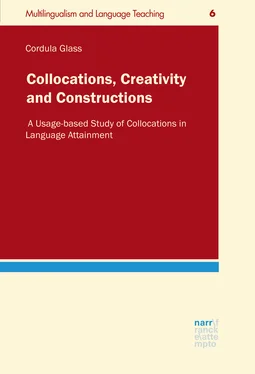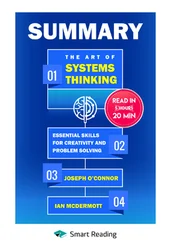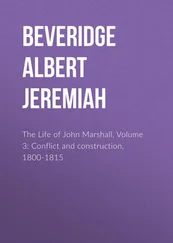Still, as has been mentioned previously, creative alternations of collocations tend to be the exception rather than the norm, hence, not every speaker might use or even tolerate the same level of creative language. For the comprehension of complex syntactic constructions, for example, Dąbrowska15 (1997) was able to show that native speakers’ acceptance diverged drastically, based on the educational background of the participants. In Chipere (2003) as well as Dąbrowska and Street (2006), non-native speakers even outperformed their native speaker counterparts in a task on the comprehension and recall of complex sentences and acceptability of plausible and implausible sentences. Thus, the connection between a collocation and its more creative alternations might be able to tell us something about the nature of collocations as such, and also serve as an indicator for potential stages of mental processing in language attainment. As they are generally constructed according to common syntactical patterns (like [Adj+N] or [VP+NP]) but apparently restricted combinatorially, collocations can neither be seen as a purely syntactical, nor as a clearly lexical phenomenon. They operate on an in-between level, which makes them a challenging subject for any comprehensive model of language.
However, since to date most studies have focused either on highly frequent combinations or collocations which were approved by academically trained evaluators16, the status of more creative alternations ranges from deviant exceptions to creative instances of language use. Only rarely has creative language use been seen as a potential next step in an ongoing language development process. But in recent years, advances in usage-based theories and construction grammar have resulted in a new perspective on language acquisition and development. Seeing language as a continuum of ongoing change, several linguists began to approach language as a dynamic, complex adaptive system (Ellis/Larsen-Freeman 2009; Larsen-Freeman/Cameron 2008), which forms structures and abstractions from the input of its environment but also contributes to a steady change by feeding new and sometimes novel or creative utterances into the system. Thus, these approaches share the assumption that the human brain shapes structures and potentially, even rules, based on the input it receives. These structures are then combined to form new utterances. Here, studies in morphology (Bybee 1995) and syntax (Ambridge/Goldberg 2008; Tomasello 2005) have already been able to show that analogy plays a crucial role when it comes to the (re)combination of established items and structures, which might also be responsible for the development of novel and creative combinations. Yet, while morphology and syntax are traditionally regarded as a rule-based system with only a few idiosyncrasies, collocations are often defined by their idiomatic and unpredictable nature. As mentioned before, they could, therefore, be seen as in-between phenomena, which would make them interesting structures to fathom the interaction and effects of linguistic innovation and convention.
Therefore, this study seeks to investigate the constructional potential of collocations and also whether creative alternation within a collocational combination could lead to its manifestation as a construction. While context- and significance-oriented approaches alike have treated collocations as descriptively interesting exceptions, this text approaches the phraseological phenomenon from a (language) attainment point of view. Partly inspired by previous studies on semantic prosody (Stewart 2010; Sinclair 2004, 1991; Partington 2004; 1998; Bublitz 1995; Louw 1993), it argues that, to a certain extent, collocations, creativity , and constructions could also be interpreted as different stages of linguistic development. The following pages are based on the idea that, not unlike coins, which, in fact, are three-dimensional objects, collocations have often been approached from two angles: as a partly opaque, phraseological phenomenon, or as a rather interesting frequency effect (Granger/Paquot 2008; Bartsch 2004; Herbst 1996). A third dimension, consisting of temporal and social context, which, like the rim of a coin, might link both sides, has thus far gained little attention. This missing link could be found by looking at the genesis of individual collocational phenomena. But a closer examination of collocational creativity against a usage-based, constructional background is not just interesting from a purely theoretical point of view. Since English today is widely regarded as a key competence, not only in terms of vocational expertise but also as an essential skill in an increasingly private sphere which is becoming ever more global and international, the need to use and understand English correctly is still growing. In the last decades, a plethora of studies has already shown that, because of their seemingly unpredictable character, collocations are one of the most challenging phenomena for non-native speakers of English (amongst others: Howarth 1996; Granger 1998; Nesselhauff 2004; de Cock 2004). With seemingly arbitrary syntagmatic as well as paradigmatic restrictions, they operate outside the traditional “slot-filler model” (Sinclair 1991: 109). Against this background, items such as collocations, which do not allow for any random lexical filling within a syntactical structure, have to be memorized. Hence, even more advanced learners struggle with native-like English phrasing and might at times despair, since they might have been marked down for using combinations such as pretty man or commit a mistake , while native speakers seem to be allowed to use them, although admittedly only under certain circumstances. Thus, the three focal research questions (RQ) of this study are:
| RQ1: |
Are collocations a cognitively stored entity, and if so, how can this perspective be adequately described in a comprehensive model of collocational combinations? |
| RQ2a: |
Is there a unified process underlying the attainment of collocational proficiency? |
| RQ2b: |
Does the collocational proficiency of native (L1) and non-native (L2) speakers of English develop in the same way? |
| RQ3: |
What role do the factors ‘creativity’ and ‘context’ play for the acceptability and analysis of collocational phenomena? |
To approach these questions, the following pages deal with a more detailed discussion of the subject matter, collocations (> 2), as well as creativity and contextual change (> 3). Here the emphasis lies on the concepts themselves, and their theoretical background, as well as their position in modern (cognitive) language attainment research, to extrapolate which factors might contribute to the acceptance of creativity and whether these could be used to explain a collocation’s creative alternation. Together with chapter 4, they contribute to RQ 1. Introducing a first cognitive conception of collocation (> 2) and discussing how and why change and creativity can be seen as a cognitive faculty (> 3), they lay the foundations for a more comprehensive model of collocation as a cognitive phenomenon within the process of language attainment (> 4). Thus, chapter 4 zooms in on the question of how approaches to language acquisition can contribute to RQ 1, and how these support a more comprehensive picture of the potential connections between collocations, creativity, and constructions. Combining different usage-based approaches towards phraseological phenomena (> 4.3), this Dynamic Model for the Cognitive Development of Collocations (DMCDC-model; > 4.4) is then put to a initial test in the subsequent chapters. In order to lay the methodological groundwork for RQs 2 and 3, chapter 5 is concerned with ways to operationalise the theoretical considerations from chapters 2 to 4 and discusses which measures need to be taken in order to be able to investigate differences between first and second language speakers as well as the role contextual factors might play. This methodology is then applied and discussed in chapters 6 and 7. Finally, chapter 8 lays out this study’s major findings and implications. Figure 1.1 illustrates the outline of the present study.
Читать дальше








![Chade-Meng Tan - Search Inside Yourself - Increase Productivity, Creativity and Happiness [ePub edition]](/books/703803/chade-thumb.webp)



